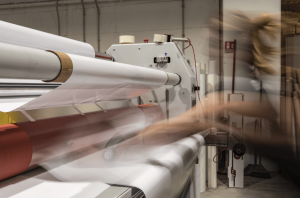Investing in lamination is a fantastic idea for many businesses, useful across a variety of industries. The flexibility of laminating services means they can work for almost any need, from packaging to automotive parts and architectural products like cladding. If you do plan to invest though, you need to think very carefully about crucial details. One we want to have a look at here is the bonding methods.
Wet laminate
 The first option is known as wet because it uses a liquid bonding agent. This is typically either water or solvent based. It offers some impressive advantages, including providing more control and versatility. Crucially, the bond is very strong and durable. This method is also popular due to the impressive clarity.
The first option is known as wet because it uses a liquid bonding agent. This is typically either water or solvent based. It offers some impressive advantages, including providing more control and versatility. Crucially, the bond is very strong and durable. This method is also popular due to the impressive clarity.
There are a few drawbacks to think about with wet lamination. Most importantly, it takes more time because you have to let the liquid bonding agent dry. If there is any secondary processing, it can cause big delays. Plus, using liquids can get very messy and equipment may need additional upkeep. There are extra costs to think about too.
Dry laminate
The main alternative gets its name because you use a film or binder rather than a liquid bonding agent. You apply whichever you want to use, then use heat to activate it in a dry laminator or oven. Applying pressure simultaneously creates a fantastic bond. The primary benefit here is you don’t need any drying time, so it can be incredibly efficient. The versatility and bond strength are fantastic too.
Once again, it is also important to think about the drawbacks of dry lamination before you commit to laminating services. The main one is the use of heat and pressure can damage different substrates. You may also have issues like bubbles, wrinkles, and curling. Problems can happen with adhesion if you don’t prepare substrates correctly. Safety can be a concern too. Finally, it is important to think about the environmental impact.
Solventless laminate
The third option is the most recent innovation. Most notably here, the method does not involve the use of solvents or liquids for bonding. Instead, there is a reaction between two components to create a strong, durable bond. You get some fantastic benefits, including a more environmentally friendly process with no emissions. The drying time is typically short too, but you do need to be careful with curing to achieve the best results.
The major issue with solventless lamination is there can be differences in the quality. Generally, you have good control and can achieve impressive flatness and softness. But, the transparency can be poorer. Plus, there can be issues such as orange peel. The most important thing is to remember this method can’t replace all applications; the technology is improving massively though.
Do you want to arrange quality laminating services?
If you’re thinking about lamination and protecting various products, it is important to think carefully about which method to use. Look closely at what substrate you are dealing with and the scope of each of the three options. Most importantly, ensure you look at your requirements in terms of quality.
We’re happy to assist if you’re trying to decide on what laminating services to use. Crucially, we can provide advice to help you get the best results for different materials and applications. So, get in touch if you have any questions.
